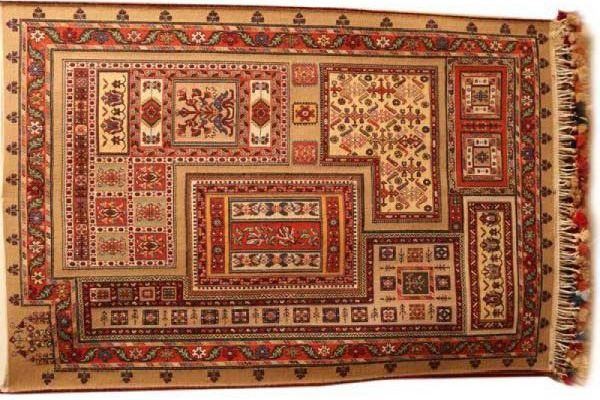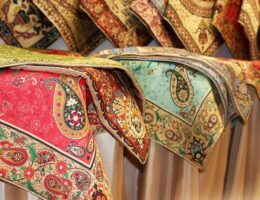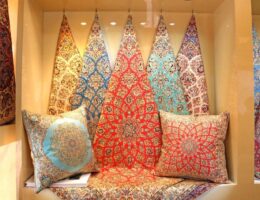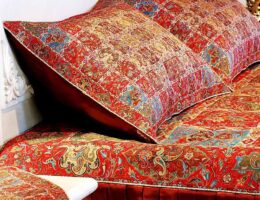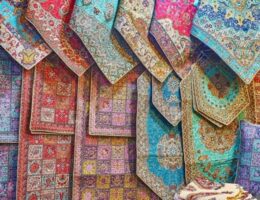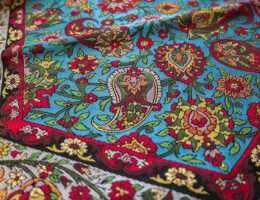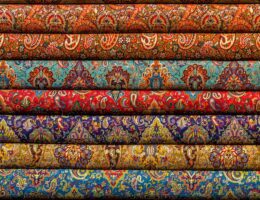IRAN ART EXHIBITION: FAMILIARIZE WITH SOME AREAS WORKING IN KILIM CARPET INDUSTRY
A while after the first men learned to make clothes out of animals’ fur and skin, they came up with the idea of creating rugs with the same fur to sit on soft rugs instead of hard cold rocks. Kilim and felt rugs, with a simpler weaving method are the first rugs that men invented. According to the evidence weaving kilims dates back to 2500 years ago. But what are Kilims?
Kilim is a flat tapestry-woven carpet, and it is produced by interweaving warp and weft strands. The weft strands which carry the designs and colors are woolen, while the hidden warp strands can be wool or cotton. Weaving kilim is a nomadic art and in Iran which is one of the ancient lands where kilims were woven, this is a feminine chore and in a tribe or village all hand woven crafts and rugs are made by the women and young girls.
Motifs
Kilim is known for its geometric and abstractive motifs with a fantastic harmony of forms and colors. These motifs are divided in different groups:
Basic geometrical shapes: triangles, hexagons, rhomboids, squares, etc.
Animal motifs: goats, horses, birds, scorpions, turtles, etc.
Floral motifs: different types of flowers, bushes, leafs and trees.
Kilim weaving areas in Iran:
Iranian kilims are woven in every corner of the country, including Khurasan, Baluchistan, Fars, Kurdistan, Azerbaijan and other provinces and each area has its very own style and method in weaving and creating motifs. Below are some of the most famous kilim weaving areas in Iran:
Shahsevan:
Known as one of the most significant Iranian Kilims, Shahsevan kilims woven by the tribes in northwest of Iran (Azerbaijan Province) are very fine and are named “Sumak” or “Varni”. The motifs of Shahsevan kilims include gazelles, horses and birds, framed with geometrical motifs. Shahsevan kilims are so diverse that no kilim is the same as the other one.
Lur:
The Lur nomads living in western Iran, make kilims with very high quality and saddlebags which are used for carrying utensils are among their best kilim products. Luri kilims are usually know with the motifs of animals that live in Luri areas and they are in green, black, blue and white.
Khamseh:
IRAN ART EXHIBITION: Khamseh (literally meaning five) is a tribe including five groups and their kilims are among the Sumak kilims with dark colors and star shaped and diamond motifs.
Baluch:
Baluch nomads who live in southeast of Iran weave their kilims with dark colors like crimson, dark blue, and brown and striped designs. The colors and motifs are rooted in Baluch culture and legends.
Hersin:
Hersin is a village in Kermanshah Province and is known for having fine kilims with happy colors and tiny motifs filling the margins.
Qashqai:
The happy and sharp colors on the kilims of the Qashqai tribe are the result of the lush environment and plains that nomads view while they migrate in Fars Province. The main Qashqai kilim motifs include geometric motifs and animals like picklocks, gazelles, and goats.
Turkmen:
Turkmen tribes living in the northeast of Iran weave kilims with distinctive motifs. The kilims are ususally in red and motifs are hexagon and octagon shapes named “Gol”, which means flower. In the Turkman kilims, each Gol is the symbol of one family.
The Kilim (also known as Kelim, Gelim and Gilim) rugs are the most well known of the Oriental flat weaves, similar to the South American Najavo rugs. Their colour comes from the weft which is tightly intertwined with the warp. Rather than an actual pile, the foundation of these rugs gives them their design and colour. The weft is woven between the warp until a new colour is needed, then is looped back round and knotted. Between colours in most Kilim rugs there is a vertical slit, this is created with the weave pulls the warp strings away from each other and is unique to Kilims. This ‘slit woven’ design is loved by collectors who find the sharp etched designs, emphasising the colourful weave, mesmerising. The weft is almost always wool, while the warp can be either cotton or wool.
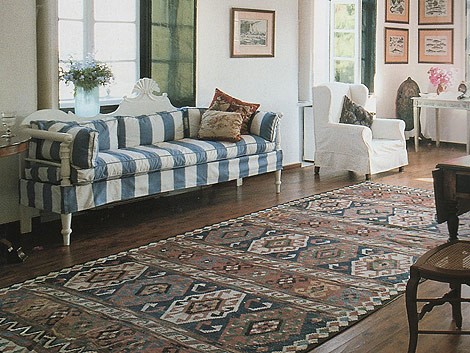
IRAN ART EXHIBITION: Because Kilims take less time to weave than pile-weaves they are generally less expensive. However, the idea of Kilims being considered as somehow less of a rug is a perception that no longer exists. Their recent popularity has driven them to be extremely collectable and their command of cost has risen as a result. Because these rugs are still very much true to their roots and not woven with the export market in mind, a buyer gets a real sense of authenticity, a rug woven with traditional patterns and colours rather than one which may have been standardised or adapted to suit the Western market. Kilims (along with jewellery, clothing and animals) are important for the identity and wealth of nomadic tribe-people. In their traditional setting they are used as floor and wall coverings, horse-saddles, storage bags, bedding and cushion covers. In recent times the production of many of these items has become.
Kilim rugs are woven, the weft inter-linked with the warp, using different colours of wool to create the rugs pattern. While Kilims are flat-woven there are many part Kilim, part pile rugs available. Mushwani, Herati and Qualane to name a few.
Kilims are also excellent as use as wall hangings, similar to tapestries they are light weigh and decorative pieces. To find out more about Kilim rugs email us or use the contact form below.
